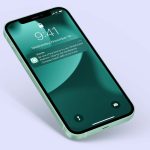What are Mobile Push Notifications?
Mobile push notifications are short, clickable messages sent straight to a user’s mobile device from an app. Unlike SMS or email, push notifications do not require an individual to be actively while using the app or perhaps have the app open. They appear as banners, alerts, or badges about the home screen or notification center in the device. Push notifications can contain text, images, emojis, and even interactive elements like buttons or sliders, driving them to a versatile tool for communication.

Key Benefits of Mobile Push Notifications
Real-Time Communication: Push notifications present an immediate approach to reach users with time-sensitive information. Whether it’s a breaking news alert, a flash sale, or an urgent reminder, push notifications ensure that users obtain the message in real-time.
Enhanced User Engagement: Regular and relevant push notifications keep users engaged using the app. They can be used to remind users of unfinished tasks (including abandoned shopping carts), encourage them to explore additional features, or re-engage them after a period of inactivity.
Personalization: One with the biggest advantages of push notifications will be the ability to personalize content. By leveraging user data, like location, behavior, and preferences, app developers can send tailored messages that resonate deeper with individual users, bringing about higher conversion rates.
Increased Retention Rates: Push notifications play a vital role in retaining users. Apps that send personalized push notifications see around 20% higher retention rates compared to those that don’t. This is because push notifications serve as a reminder of the app’s value, encouraging users to send back and carry on using it.
Driving Conversions: Push notifications really are a powerful tool for driving conversions, whether it’s making a purchase, registering for a service, or completing a survey. By delivering timely and relevant calls-to-action directly to the person’s device, push notifications can effectively guide users around the conversion funnel.
Best Practices for Mobile Push Notifications
While push notifications offer numerous benefits, their effectiveness is determined by how they are implemented. Here are some best practices to consider:
Timing is Everything: The timing of push notifications can significantly impact their effectiveness. Sending notifications at the right time—for example during peak usage hours or based on individual user behavior—can improve the likelihood of engagement.
Segmentation and Targeting: Not all users are similar, and neither should be your push notifications. Segmenting your audience depending on factors like demographics, behavior, and in-app activity permits you to send more relevant and targeted messages, which will be more likely to become appreciated and acted upon.
Personalization: Personalization surpasses just using the consumer’s name inside notification. It involves tailoring the information to the consumer’s preferences, past interactions, and current context. Personalized notifications tend to be engaging and can lead to higher sales.
Clear and Concise Messaging: Push notifications must be brief and to the point. Users must be able to see the message instantly and determine what action to take next. Avoid overloading the notification with an excessive amount of information or unnecessary jargon.
Call to Action (CTA): Every push notification needs to have a clear CTA. Whether it’s to open up the app, visit a website, or buy something, the CTA needs to be easy to identify and do something about.
Frequency Control: Bombarding users with way too many notifications can bring about frustration and bring about users disabling notifications or uninstalling the app altogether. It’s crucial that you find the right balance and avoid overwhelming users with excessive messages.
A/B Testing: Continuously test different aspects of your push notifications, such as messaging, timing, and frequency, to see what resonates best with your audience. A/B testing allows you to optimize your strategy based on real user data.
Opt-In and Opt-Out Options: Always give users current debts opt-in to obtain notifications making it easy to allow them to opt-out whenever they wish. Respecting user preferences is vital to maintaining a positive user experience.
Challenges of Mobile Push Notifications
Despite their benefits, mobile push notifications are available with challenges:
Notification Fatigue: Users can experience fatigue if they receive too many notifications, resulting in a decline in engagement or app uninstallations.
Privacy Concerns: Users are becoming increasingly concerned with their privacy, particularly when apps request entry to personal data. Transparency about how exactly data will probably be used for notifications is essential to developing trust.
Deliverability Issues: Technical issues can on occasion prevent notifications from being delivered, or they are often delayed. Ensuring reliable delivery is critical on the effectiveness of push notifications.
App Dependency: Push notifications require users to have the app installed and notifications enabled. If users disable notifications or uninstall the app, the communication channel is lost.
The Future of Mobile Push Notifications
As technology advances, the future of mobile push notifications looks promising. Here are some trends to observe:
AI and Machine Learning: These technologies will enable more intelligent push notifications, with AI predicting local plumber to send messages and personalizing content depending on real-time user data.
Rich Media Push Notifications: The use of images, videos, and interactive elements in push notifications can be more prevalent, providing a richer plus much more engaging buyer experience.
Cross-Platform Notifications: As users talk with brands across multiple devices, cross-platform push notifications that sync across mobile, desktop, and also other connected devices can become more common.
Contextual and Location-Based Notifications: Advances in geofencing and beacon technology enables even more precise targeting of push notifications determined by a user’s location and real-world context.
Mobile push notifications certainly are a powerful tool for enhancing user engagement, driving conversions, and retaining users in the competitive mobile app landscape. When used strategically, they can significantly improve the consumer experience and contribute to the success of an app. However, it’s necessary to follow recommendations and be mindful of the challenges to ensure that push notifications remain a priceless and appreciated feature for users. As technology will continue to evolve, also the capabilities and effectiveness of push notifications, causing them to be an indispensable portion of mobile marketing strategies.